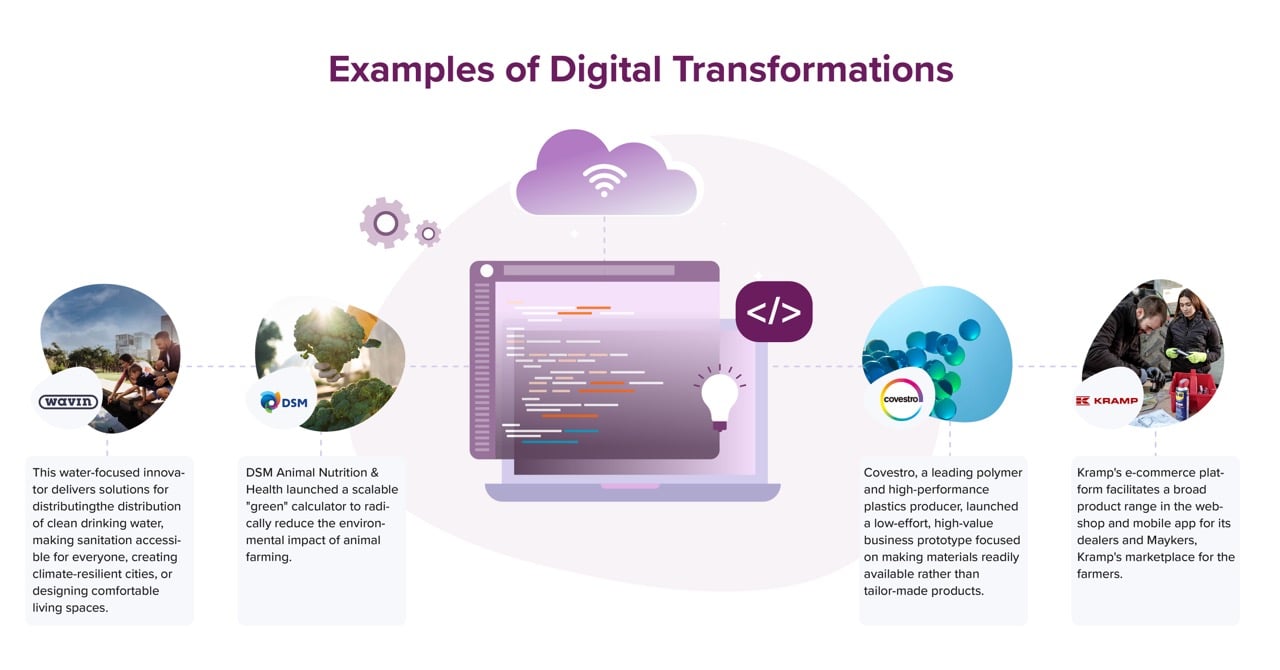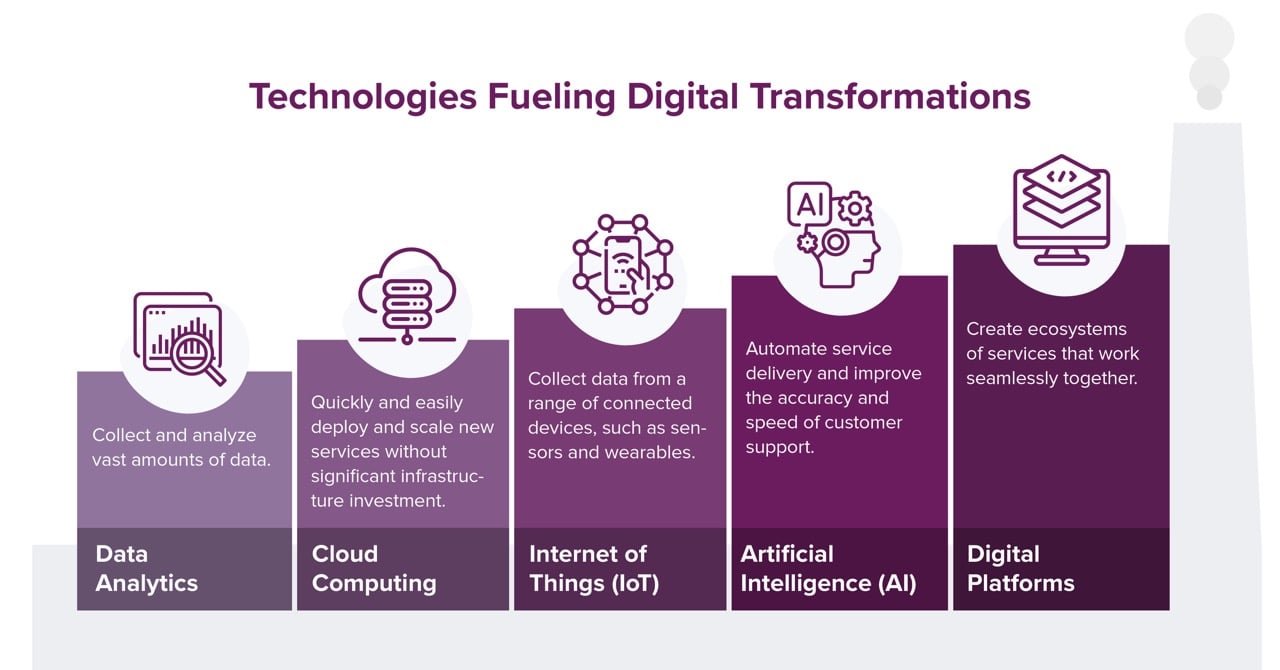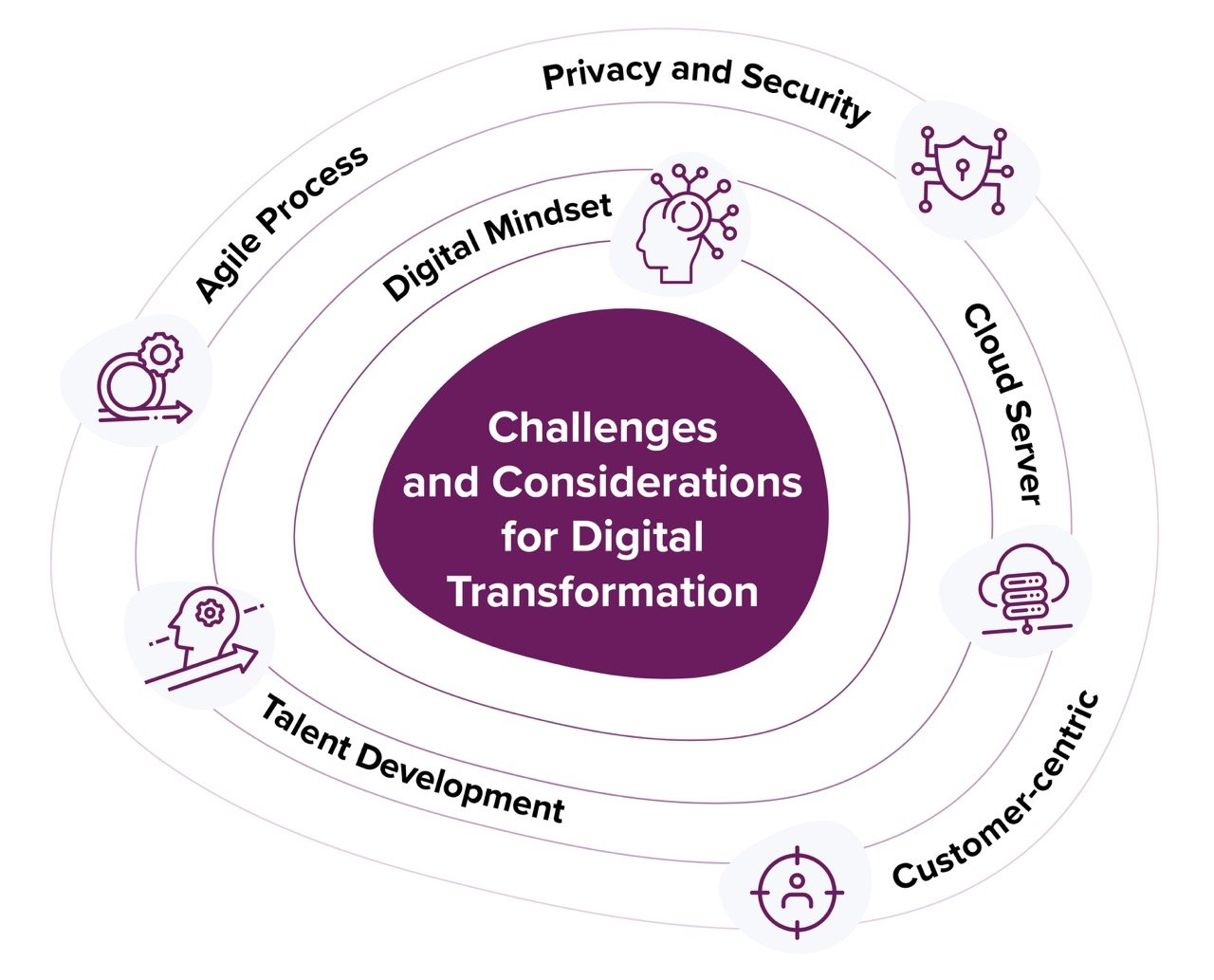Large, billion-dollar companies are reinventing themselves — shifting their focus from producing physical products to providing services based on digital technologies. Why? Not only do they want to thrive in this new, technology-driven economy, but they also want to contribute to making the world a better place. By becoming "digital at heart," they can streamline operations, be more customer-centric, agile, and efficient, and ultimately achieve more socially-driven purposes. In this article, we will explore what it takes to make the change and how technology supports it.
Buildings, Boats, and Farms: What's Tech Got to Do With It?
From construction to maritime to agriculture and beyond, traditional industries are reimagining their business models with technology and sustainability in mind.
One pioneering example is Orbia’s Building and Infrastructure business, Wavin. This water-focused innovator delivers solutions for distributing clean drinking water, making sanitation accessible for everyone, creating climate-resilient cities, or designing comfortable living spaces. With its recently customized Internet of Things (IoT) cloud platform, Wavin collaborates with municipal leaders, engineers, contractors, and installers to help advance life worldwide by building healthy, sustainable environments. The company's ultimate goal? To create positive change in the world by making cities future-proof and buildings comfortable and energy-efficient.
Similarly, in the maritime industry, companies are moving towards providing digital services such as vessel tracking and cargo monitoring, which can help to improve safety, efficiency, and profitability.

In response to the agricultural industry-wide need for accurate, measurable data, global science-based company DSM Animal Nutrition & Health launched a scalable “green" calculator to reduce the environmental impact of animal farming radically. Farmers can use the tool to evaluate the impact of current practices and new innovations. They can also use it to run virtual scenarios to see how to reduce these impacts by making nutritional and management interventions to the farming system. The system runs on AWS, which has allowed rapid development while also being ready for instant scalability as demand grows.
With the goal of making work as easy as possible for farmers across Europe, Kramp, a spare parts distributor for the agriculture, forest and grass care, and construction industries, launched Kramp Hub. This digital agency leverages data, AI, and MLOps to create solutions that help move the ag-tech industry into a data-driven and customer-centric direction. For example, Kramp's e-commerce platform facilitates a broad product range in the webshop and mobile app for its dealers and Maykers, Kramp's marketplace for the farmers.
In another example of rethinking its business model, Covestro, a leading polymer and high-performance plastics producer, launched a low-effort, high-value business prototype focused on making materials readily available rather than tailor-made products. This unique, innovative distribution channel enables users to sell surplus stock directly on a global scale in small batches rather than in bulk.
Clearly, technology plays a crucial role in helping organizations like these and others to successfully shift their focus from products to innovative new services, business models, tools, and distribution channels. But exactly what types of technologies are fueling these innovative digital transformations?
Technology to the Rescue
When a traditional product-focused company wants to pivot towards a more innovative, service-focused endeavor, there are five ways technology can facilitate and fuel the shift: data analytics, cloud computing, the Internet of Things (IoT), artificial intelligence (AI), and digital platforms. But what are these technologies and how do they contribute to a successful digital transformation?
Data analytics technology can help an organization collect and analyze vast amounts of data about its customers, products, and services. This data can identify opportunities for new services, improve existing services, and personalize services to meet individual customer needs.
Cloud computing enables an organization to quickly and easily deploy and scale new services without significant infrastructure investment. This allows for rapid experimentation with new service offerings and the ability to adapt to changing market conditions.
The Internet of Things (IoT) allows an organization to collect data from various connected devices, such as sensors and wearables. This data can be used to develop new services that enhance customer experiences and improve operational efficiency.
Artificial intelligence (AI) can be used to automate service delivery and improve the accuracy and speed of customer support. AI-powered chatbots, for example, can provide customers with quick and personalized assistance, while AI-powered analytics can help an organization identify opportunities to optimize its services.
And finally, digital platforms enable an organization to create ecosystems of services that work seamlessly together. By leveraging digital platforms, a company can offer integrated, holistic service offerings that deliver greater customer value.

The Challenges to Change
In addition to understanding the crucial role technology plays and how it works, enterprises that want to evolve their business models into ones with digital at the heart of the company must be aware of several developments and challenges that can arise during the process. Here are some key things they should consider:
- Embrace a digital-first mindset: Shift the company mindset to prioritize digital technologies and data-driven decision-making. This requires buy-in from all levels of the organization, including executives, managers, and frontline workers.
- Invest in digital infrastructure: This may include upgrading legacy systems, adopting cloud-based solutions, and investing in cybersecurity measures to protect against cyber threats.
- Emphasize customer-centricity: Use digital technologies to gain deeper insights into customer behaviors and preferences, then use this information to design products and services that meet customers' needs and create positive experiences.
- Embrace agility and experimentation: Be willing to experiment and pivot quickly if a particular approach doesn't work out.
- Emphasize talent development: Invest in talent development programs to ensure employees have the skills to succeed in a digital-first environment.
- Address privacy and security concerns: Comply with privacy regulations, implement strong security measures, and be transparent about data collection and usage.

Ensuring a Successful Pivot
So, how can traditional enterprises ensure success in this pivot? One key factor is to work with technology consultants and experts who can help them navigate the complex landscape of digital transformation and its nuances. For example, Xebia — a global technology consulting and software development company based in the Netherlands — has helped traditional enterprises shift from product to service-based models by leveraging new technologies to create innovative new services that meet the needs of their customers. Wavin, DSM Animal Nutrition & Health, Covestro, and Kramp, who are featured in the examples earlier, brought in Xebia as a technology consultant and partner to help steer their unique digital journeys and achieve their ambitions.
By working with technology consultants — like Xebia — and adopting agile methodologies, traditional enterprises can successfully pivot towards digital transformation and become more customer-centric, efficient, sustainable, and profitable in the new economy. A company like Xebia can also connect companies so they can share experiences and gain insights. This way, organizations that embark on the digital journey don't need to reinvent the wheel — or go at it alone.
From Products to Services: Materials Specialist Wavin Pumps Up Its Sustainability
Overall, the transition to a digital business model can be challenging, but the benefits can be enormous — from both a profit and sustainability perspective. Companies that successfully make the shift can gain a competitive edge, improve customer experiences, and create new revenue streams. They can also ensure continuity by rethinking how they add value for their customers and remain relevant in a new day and age — not to mention making the world a better place overall.
By being aware of these developments and challenges, traditional enterprises can successfully transition to a digital-first business model — with digital at the heart.
Here's a more in-depth look at how Wavin joined forces with Xebia to successfully move from a product to a service-based model. You can also read about DSM Animal Nutrition & Health, Covestro, and Kramp by following the links.

Wavin wanted to make a more sustainable impact. To do so, it pivoted from mainly one-off purchases to an added-value concept for efficient water use. It needed to transform from being a product manufacturer into a service provider with sustainability at its heart to achieve this.
With the world's water supply under imminent threat, Wavin realized that its technology had to get smarter. It needed an Internet of Things (IoT) platform based in the cloud to achieve growth, innovation, and sustainability. Wavin worked with Xebia to create the Digital Services Factory (DSF). This innovation lab enabled them to bring disparate initiatives into the company's core strategy and integrate them within its platform.
For example, The PolderRoof solution transforms flat roofs into intelligent, controlled water reservoirs with integrated irrigation functions. PolderRoof connects to Wavin's cloud platform, ensuring all raw data can be processed and utilized across the company in other applications, for example, within data analysis provided to building managers.
The company's IT infrastructure has become its core activity, with everything connected to it, including the hardware Wavin produces.
Having a clear company-wide vision of the end goal has convinced Wavin’s project team to implement change in every area. Wavin has expanded its horizons far beyond pipe manufacturing. With the introduction of its IoT platform, the company now collaborates closely with customers to discover the most sustainable and intelligent water management solutions tailored to their needs. This includes providing all the necessary technology and ongoing support for long-term implementation. In essence, Wavin has harnessed technology to transform into a service provider. In short, technology has empowered Wavin to be a sustainable service provider.
Let Xebia Help You on Your Journey
Do you want to learn more about becoming "digital at heart" and how this transformation can help your company achieve its greater purpose? Get in touch with Roy van Zoggel, he'd love to tell you more!





